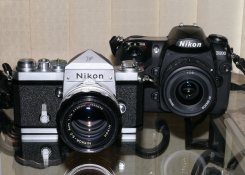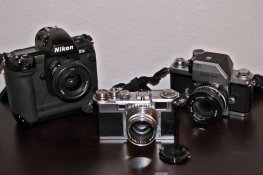snegron
Member
Just out of curiosity, does anyone know how much extreme cold weather an F can withstand? If, for example, I were thinking about traveling to Alaska during December/January to get shots of the northern lights and I were to take my F with standard meterless prism with me, how much cold can it withstand before freezing up or some other type of failure? I'm assuming the temps can probably reach -20 or so. Will my F freeze up?
p.s:
1. Will my manual focus AIS lenses be able to withstand the extreme cold weather?
2. Will my film be able to work under extreme conditions ? Will the emulsion work? Will the cold cause the actual film to become brittle?
p.s:
1. Will my manual focus AIS lenses be able to withstand the extreme cold weather?
2. Will my film be able to work under extreme conditions ? Will the emulsion work? Will the cold cause the actual film to become brittle?










 , I think it will be ok to use it on -20C. I used Leica M3 and Nikon F on cca -15C in Poland, no problem at all.
, I think it will be ok to use it on -20C. I used Leica M3 and Nikon F on cca -15C in Poland, no problem at all.


